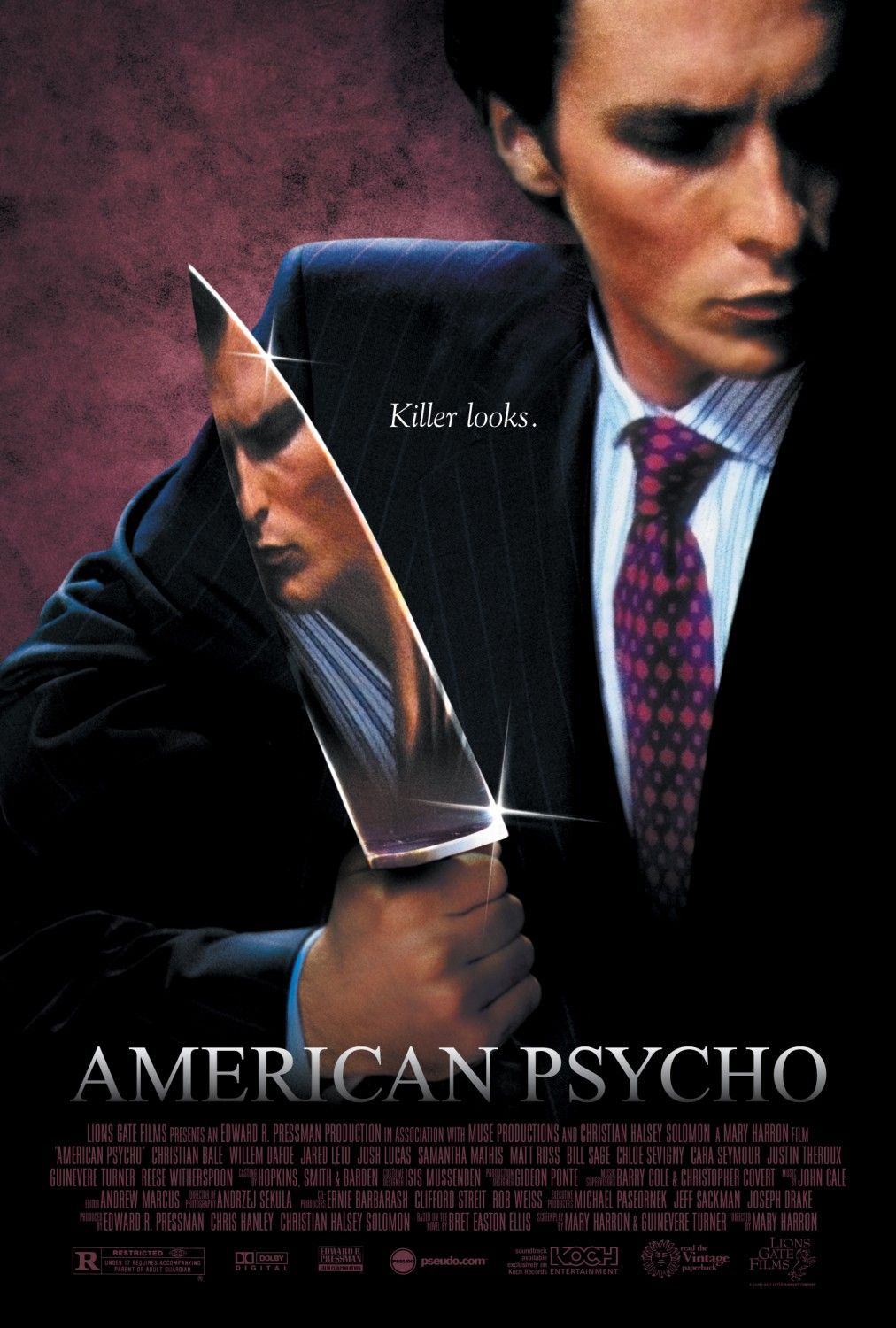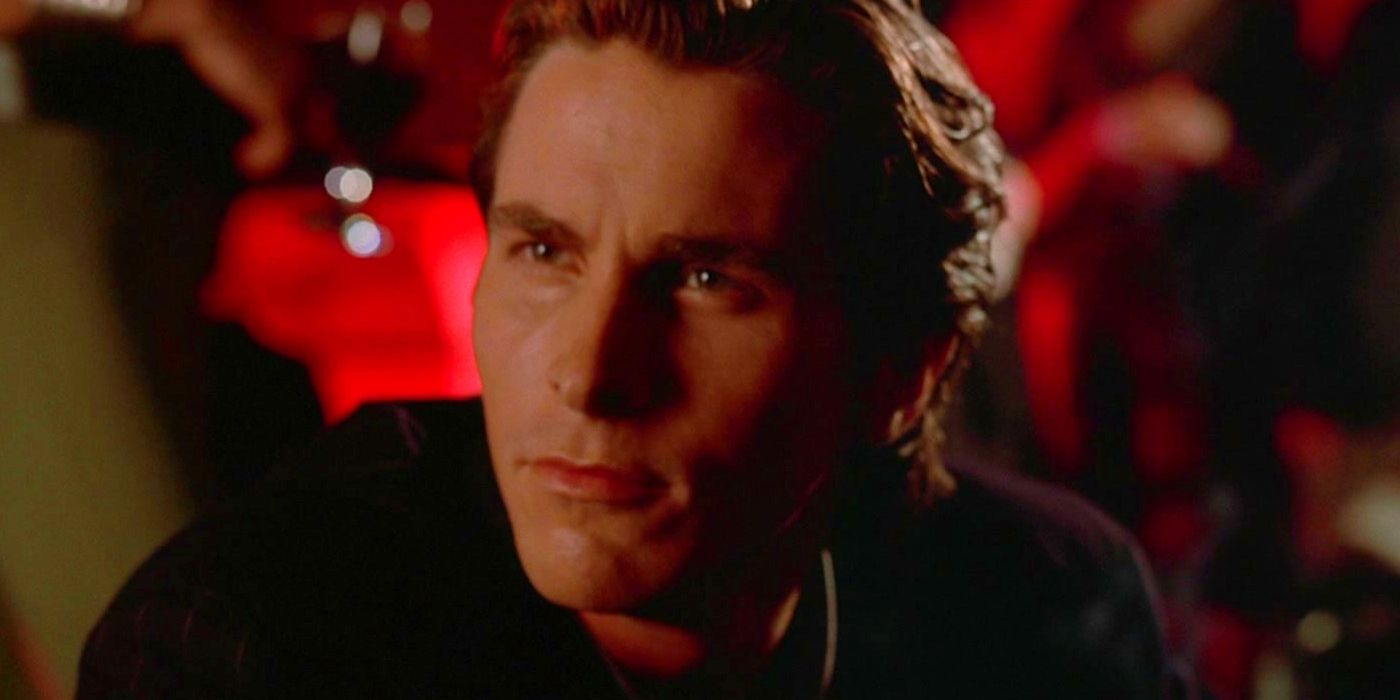While not the first adaptation of one of the author’s novels, American Psycho certainly remains the most popular Bret Easton Ellis-based movie. After 25 years and numerous rewatches later, it’s easy to see why. Ellis’ work first made its way to the screen with the Robert Downey Jr.-starring Less Than Zero, an underrated gem tackling similar themes to Psycho, and later continued with 2002’s The Rules of Attraction, which is technically connected to the Christian Bale-led movie, and 2008’s The Informers.
Co-written and directed by Mary Harron, 2000’s American Psycho puts its focus on Patrick Bateman, a New York investment banker in his 20s who enjoys a very comfortable life with a lavish penthouse and beautiful fiancée. Privately, Bateman spends much of his time harboring and acting on violent fantasies, sleeping with women he meets at clubs and prostitutes, only to subsequently harm or kill them. As the body count grows and his mental state deteriorates, Bateman’s seemingly perfect life begins to devolve.
American Psycho Is A Decidedly Faithful Adaptation Of Ellis’ Novel
Harron & Co-Writer Guinevere Turner Adhere To The Source Material For Better & Worse
The rights to Ellis’ novel were kicked around for nearly a decade before the movie was finally made and for a good reason. American Psycho largely plays out through the eyes of Bateman, both his actual actions and his thoughts, with a first-person narration driving the plot forward. It made for a pretty hefty challenge for any filmmaker who dared to attempt to translate the character and his world to the screen.
In the hands of Harron and co-writer Guinevere Turner, Ellis’ novel finds itself adapted quite faithfully, albeit with just enough changes to fit a film format. On the whole, the changes made to American Psycho are generally to the film’s benefit, as the removal of Bateman’s narration adds an air of mystery regarding his actions, while also removing the excessive nature of his hypercritical mindset. Additionally, cutting out some of the kills from the book makes the movie a little more palatable.
That being said, some of the changes from the book do prove a bit disappointing and contradictory to some of the themes of the source material. Ellis’ takedown of yuppie culture ends up feeling a bit too broad in the film, the fact that Bateman often rationalizes his murders in the novel before committing them adds to his psychotic nature, and even makes American Psycho‘s infamously ambiguous ending a little easier to accept.
Harron Nicely Builds A Steady Stream Of Suspense
The Visual Style Is An Appropriate Mix Of Slick & Minimal To Match Bateman’s Mindset
With a period setting of 1987, American Psycho could have just as easily fallen into the same era tropes many modern movies and shows fall into when setting their stories in that decade. Thanks in part to the success of Stranger Things, many find themselves flooding the screen with neon visuals, over-the-top hairstyles and fashion choices, and building the soundtrack with poppy hits of the time.
Thankfully, with Harron at the helm in only her second-ever feature, American Psycho finds itself being true to the world and mindset of Bateman through its visual palette. She and cinematographer Andrzej Sekuła do a remarkable job of recognizing which moments to add a little extra flair to, the business card sequence being a memorable one, while allowing the rest of the movie to play out rather stoically and with a largely muted color palette. This perfectly aligns with the straightforward and methodical nature of its central protagonist, whose mind we’re meant to be inhabiting.
Christian Bale’s Performance Remains The Best Part Of The Film
Even 25 Years Later, It’s Still One Of His Best
With a character as despicable as Patrick Bateman, one of the most important things American Psycho needed to tackle was casting someone we could tolerate watching, regardless of his actions, and Harron certainly hit the nail on the head with Bale. Though one may be tempted to critique his performance as robotic, it proves to be a perfect fit for Bateman, given how carefully put together he is and how deliberate he is in his thoughts.
Even when things begin to take a turn for the worst for Bateman, and he finds himself questioning his sanity, Bale finds the right levels of escalation for every sequence. Whether it’s subtly sweating over his jealousy from a business card or having a full-on manic breakdown as he confesses all of the crimes he may or may not have committed to his lawyer in a voicemail, Bale turns in a brilliant performance in American Psycho that, even when put up against his Oscar-winning and nominated roles, remains one of his all-time best.
American Psycho is now available to stream on Hulu in honor of its 25th anniversary.

- Much of Ellis’ novel is translated faithfully to the screen, while some changes are welcome ones.
- Mary Harron’s direction is visually slick and cognizant of Bateman’s mindset.
- Christian Bale’s performance remains one of his best.
- Some of the changes to the book remove major context for Bateman’s psychopathy.
- Many of the characters feel like they lack any kind of agency.

